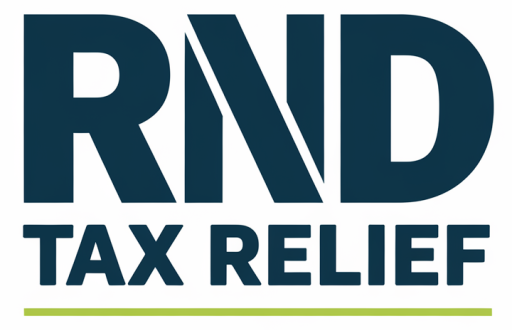Master Project Mapping to Maximise R&D Tax Relief Benefits
Master Project Mapping to Maximise R&D Tax Relief Benefits
If you’re a UK business investing in innovation or new product development, chances are you’ve heard about R&D tax relief. But did you know that setting up your projects the right way could mean the difference between claiming a small refund or a significant one?
In this blog post, we’ll break down the concept of project mapping — a key strategy that can help you claim more through R&D tax credits. Don’t worry, we’ll keep things simple, friendly, and jargon-free. By the end, you’ll feel more confident about unlocking the full benefits of these generous government incentives.
Understanding R&D Tax Relief
Let’s start with the basics. The UK government offers R&D tax relief to encourage businesses to invest in innovation. That could be developing a new product, designing an improved process, or creating a smarter piece of software. If your work tackles technical challenges or involves uncertainty, you might qualify.
Depending on your business size and structure, you could claim back a portion of your R&D spend — sometimes even as a cash credit. This includes costs like salaries, subcontractors, and some overheads. If you’re curious about what qualifies, check out this guide to R&D tax credits.
So, What is Project Mapping?
Think of project mapping like planning a journey before hitting the road. Instead of diving in headfirst, you sit down and work out the route ahead of time. In the world of R&D claims, this means clearly identifying and defining each of your R&D projects — and knowing where they start and end.
Many businesses make the mistake of lumping everything into one blurry claim. But that’s like trying to claim mileage for a cross-country road trip without showing where you stopped along the way. HMRC expects more detail these days. That’s where project mapping comes in.
Why Project Mapping Matters
Let’s look at why mapping your R&D projects is worth the effort:
- Higher claims: Proper mapping means you can claim for pieces of work that might otherwise be missed.
- Easier to justify: HMRC wants to see a clear line between what counts as R&D and what doesn’t. Mapping helps you tell that story.
- More efficient claims: With well-documented projects, gathering costs and evidence becomes a breeze.
- Avoids HMRC challenges: You’re less likely to get your claim queried or delayed.
Sound good? Now let’s look at how to do it well.
How to Set Up Your R&D Projects for Better Claims
Project mapping doesn’t have to be complicated. The goal is to separate your work into distinct development efforts, each tied to a specific technical goal or uncertainty. Here’s a straightforward approach:
1. Identify the Technical Challenge
Ask yourself: What problem were we trying to solve that couldn’t easily be answered with existing solutions? If your engineers, developers, or designers were scratching their heads — that’s a good sign you’re onto something.
2. Define the Start and End Point
An R&D project begins when you start investigating the uncertain or tricky part. It ends when you’ve found a working solution (or given up trying!). Be clear about where that journey begins and ends.
3. Separate Projects by Uncertainty
It’s tempting to file everything under one umbrella, like “new product development.” But if there were two or three technically different challenges during that time, you might have multiple R&D projects instead. For instance:
- Creating a new algorithm = one project
- Developing a secure user interface = another project
- Integrating with third-party systems? That could be a third!
4. Document Progress and Setbacks
HMRC loves to see the journey, not just the destination. Keep notes (even if informal) about your experiments, dead-ends, and breakthroughs. Photos of whiteboards, developer notes, or progress reports can help here.
5. Track Eligible Costs
Assign time and resources to each mapped project. That way, when you come to file your R&D tax relief claim, you know which people worked on what, and for how long.
A Real Example: Software Development
Let’s say you run a software firm, and your team spends six months building a new platform for clients. Sounds like one R&D project, right? But on closer inspection, your developers struggled with a unique data sync challenge and built a new encryption method. That’s two technical problems — two R&D projects.
By mapping those out separately, you can:
- Maximise what you can claim for both issues
- Assign staff time more accurately
- Create better documentation for HMRC
Project Mapping and HMRC Compliance
HMRC has become more focused on compliance and clear documentation in recent years. In fact, new reporting requirements were introduced in 2023. You now need to provide more information on your projects, uncertainties, and outcomes at the time of claiming.
Check the latest guidelines on HMRC’s official website to stay updated. But the core idea is simple: make it easy for them to understand what you’ve done and why it qualifies.
Tips for Making Project Mapping Easier
Not every business has the time or resources for detailed record-keeping, so here are a few beginner-friendly tips:
- Start small: Aim to document your top 1-2 R&D projects this year
- Involve your team: Engineers, developers, and designers can share insights
- Use tools you already have: Project management software like Jira, Trello, or Asana can help structure things
- Review every quarter: Don’t wait until year-end to track progress
Final Thoughts
Project mapping might sound formal, but it’s really just good storytelling. It’s about showing how you tackled tough technical challenges — and claiming what you rightly deserve for that effort.
As a bonus, you’ll not only improve your R&D tax relief claim but also gain better insight into your team’s innovative work. Who knows — you might even discover areas of R&D you hadn’t considered before!
Need Help?
If you’re unsure about how to present your projects for maximum R&D relief, working with a specialist can make a big difference. They’ll know exactly how to map, write up, and submit your claim in line with the latest regulations from gov.uk and HMRC.
Ultimately, smart project mapping is more than admin — it’s a clever way to uncover hidden value in the work you’re already doing. Ready to map (and claim) more? Now’s the time to begin.






